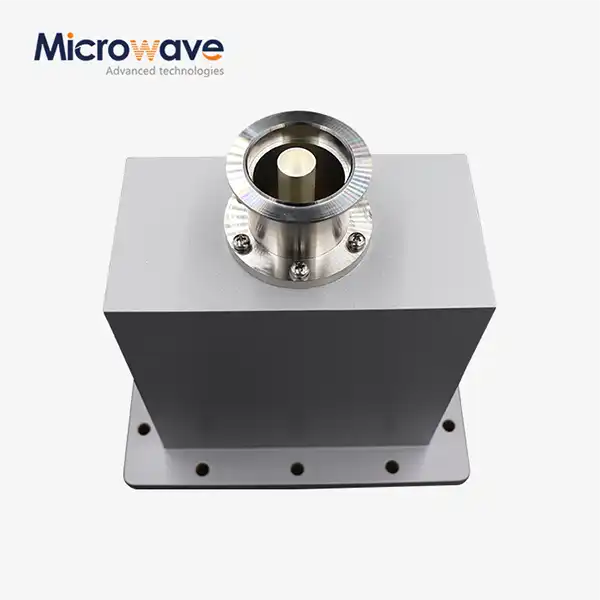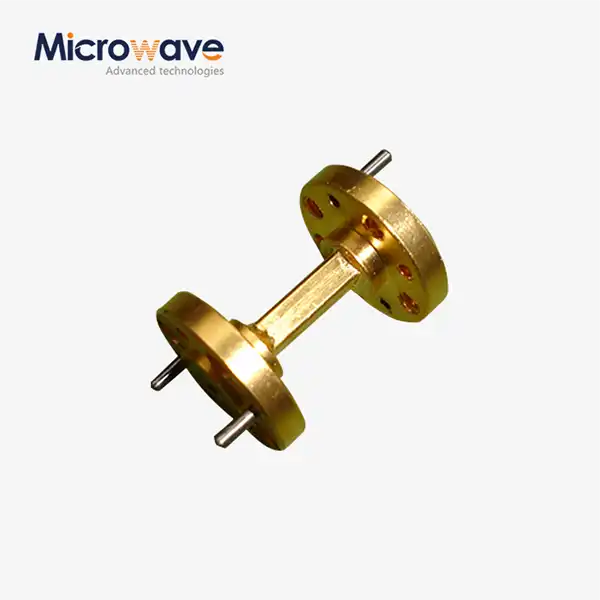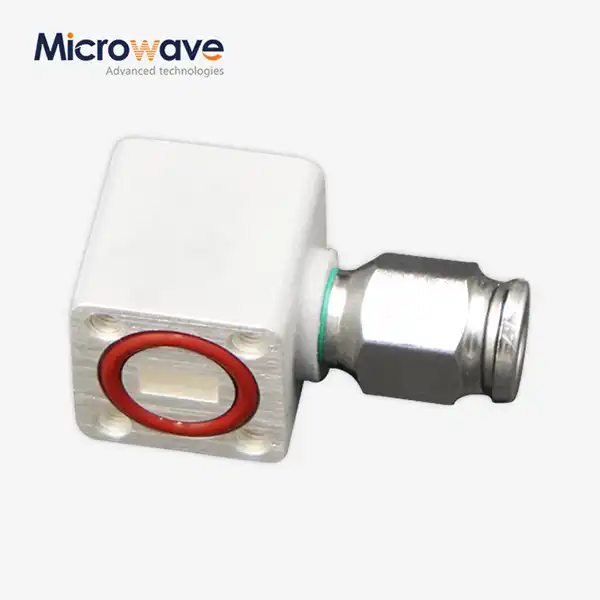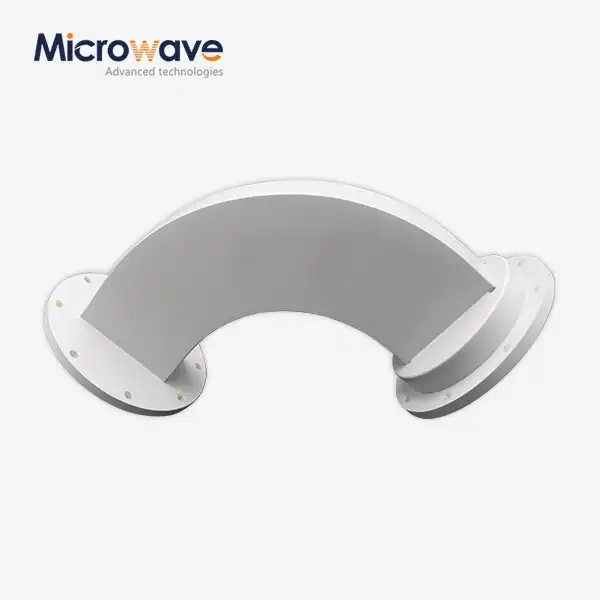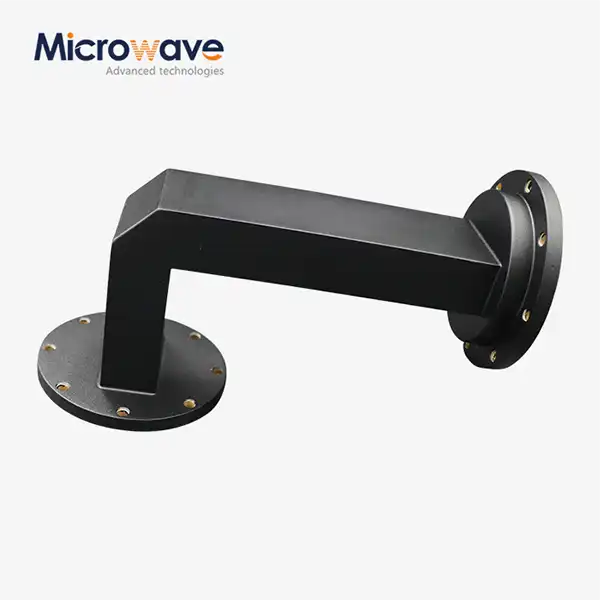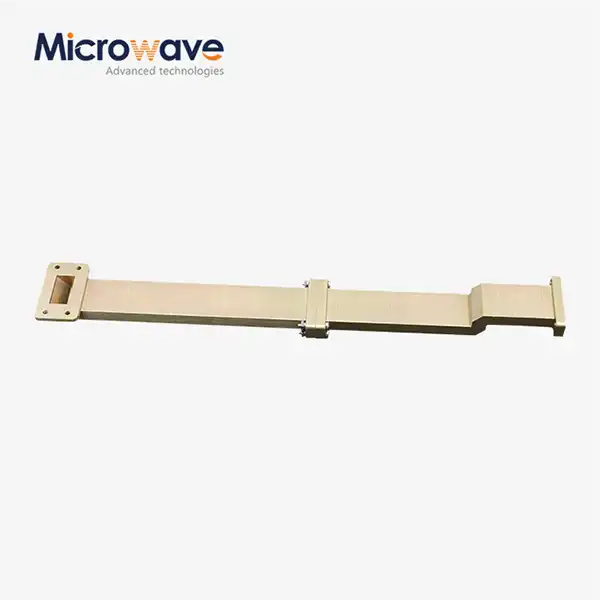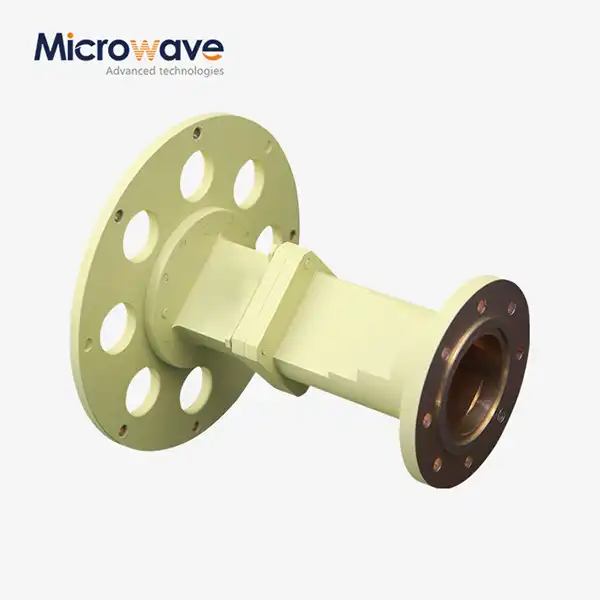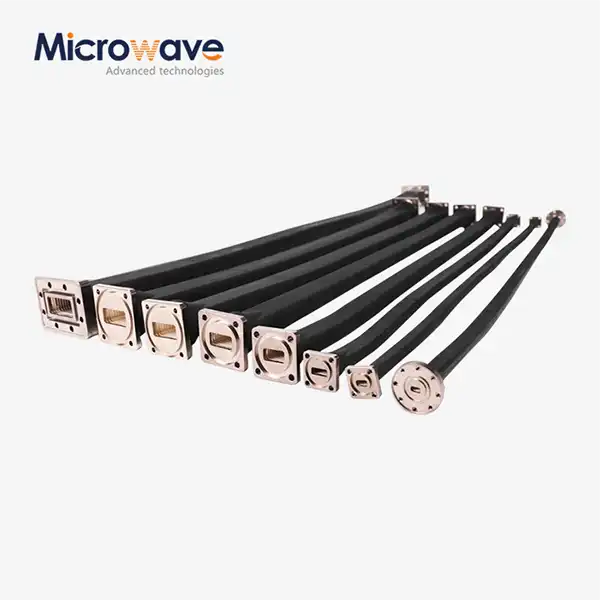How Do Key Parameters Such as Focal Length, Sub-Reflector Offset, and Edge Taper Affect Cassegrain Antenna Performance?
Understanding the intricate relationship between key design parameters and performance characteristics is essential for engineers working with Cassegrain antenna systems. The focal length, sub-reflector offset, and edge taper represent three critical parameters that significantly influence overall antenna performance, including gain, beam pattern, efficiency, and signal quality. Modern cassegrain antenna designs require precise optimization of these parameters to achieve superior performance in satellite communications, defense applications, and aerospace systems. Each parameter interacts with others in complex ways, creating opportunities for performance enhancement when properly configured. Advanced Microwave Technologies Co., Ltd. leverages decades of experience in microwave technology to optimize these parameters, delivering high-performance antenna solutions across frequency ranges from 1 GHz to 110 GHz with customizable configurations that meet specific application requirements.
Understanding Focal Length Impact on Cassegrain Antenna Performance
Focal Length Optimization for Signal Concentration
The focal length of a cassegrain antenna fundamentally determines how electromagnetic energy is concentrated and distributed within the antenna system. When the focal length is properly optimized, the primary reflector efficiently collects incoming signals and directs them toward the sub-reflector, which then focuses the energy into the feed horn located at the secondary focal point. This dual-reflector configuration allows for enhanced signal concentration compared to single-reflector designs. Advanced Microwave Technologies Co., Ltd. utilizes sophisticated modeling techniques to determine optimal focal lengths for specific applications, ensuring maximum signal capture efficiency. The focal length directly affects the f/D ratio (focal length to diameter ratio), which influences the illumination pattern across the primary reflector surface. A well-designed cassegrain antenna with appropriate focal length optimization can achieve gains ranging from 35 dB to 60 dB, depending on the specific configuration and frequency of operation. The relationship between focal length and aperture efficiency becomes particularly critical in high-frequency applications where wavelength considerations significantly impact performance characteristics.
Beamwidth Control Through Focal Length Adjustment
Focal length adjustment provides engineers with a powerful tool for controlling the beamwidth characteristics of cassegrain antenna systems. Shorter focal lengths typically result in wider beamwidths, while longer focal lengths produce narrower, more focused beams. This relationship is particularly important in applications requiring precise beam steering or coverage area control. The cassegrain antenna design allows for flexible focal length optimization without significantly increasing the overall antenna profile, making it ideal for space-constrained applications. Advanced Microwave Technologies Co., Ltd. offers customizable beamwidth options ranging from 1° to 30°, achieved through careful focal length engineering combined with reflector geometry optimization. The focal length also influences the spillover losses, which occur when energy from the feed horn misses the sub-reflector. Proper focal length selection minimizes these losses while maintaining desired beam characteristics. In satellite communication applications, optimal focal length configuration ensures efficient signal transmission across vast distances while maintaining signal integrity. The interaction between focal length and frequency response becomes particularly critical in broadband applications where maintaining consistent beamwidth across the entire operating frequency range is essential for reliable performance.
Feed System Integration and Focal Length Considerations
The integration of feed systems with cassegrain antenna configurations requires careful consideration of focal length parameters to achieve optimal performance. The secondary focal point, determined by the focal length and sub-reflector positioning, must align precisely with the feed horn location to maximize energy transfer efficiency. Advanced Microwave Technologies Co., Ltd. designs cassegrain antenna systems with focal lengths optimized for specific feed configurations, ensuring minimal signal loss and maximum system efficiency. The focal length affects the angular subtense of the sub-reflector as seen from the feed, which directly impacts the illumination efficiency and spillover characteristics. Proper focal length selection enables the use of compact feed systems while maintaining high efficiency, which is particularly valuable in applications where space and weight constraints are critical factors. The cassegrain antenna architecture allows for the placement of complex feed networks and associated electronics at the secondary focal point, where they can be easily accessed for maintenance and upgrades. This configuration advantage is enhanced when focal length parameters are optimized for specific feed system requirements. The relationship between focal length and feed system bandwidth becomes increasingly important in modern wideband applications, where maintaining consistent performance across extended frequency ranges is essential for reliable operation.
Sub-Reflector Offset Effects on Antenna Efficiency and Performance
Aperture Efficiency Enhancement Through Offset Optimization
Sub-reflector offset optimization represents a critical design parameter for maximizing aperture efficiency in cassegrain antenna systems. The offset distance determines how effectively the sub-reflector intercepts and redirects energy from the primary reflector toward the feed system. When properly optimized, the sub-reflector offset minimizes blockage effects while maximizing the useful aperture area. Advanced Microwave Technologies Co., Ltd. employs advanced electromagnetic modeling to determine optimal offset configurations for specific applications, ensuring maximum aperture utilization. The cassegrain antenna design inherently provides better aperture efficiency compared to front-fed configurations because the sub-reflector and feed system create less shadowing of the primary aperture. Optimal offset positioning reduces diffraction effects at the sub-reflector edges, which can degrade antenna performance at higher frequencies. The relationship between sub-reflector size and offset distance must be carefully balanced to achieve the desired performance characteristics while maintaining structural integrity and manufacturability. Frequency-dependent effects become more pronounced at millimeter-wave frequencies, where sub-reflector offset optimization becomes critical for maintaining high efficiency across the entire operating bandwidth. The offset configuration also influences the cross-polarization characteristics of the antenna, making precise optimization essential for applications requiring high polarization purity.
Pattern Shaping and Sidelobe Control
Sub-reflector offset configuration significantly influences the radiation pattern characteristics and sidelobe performance of cassegrain antenna systems. The offset distance affects the amplitude and phase distribution across the primary aperture, directly impacting the far-field radiation pattern. Proper offset optimization enables engineers to achieve desired pattern characteristics while minimizing unwanted sidelobes that can cause interference in communication systems. Advanced Microwave Technologies Co., Ltd. utilizes sophisticated pattern synthesis techniques to optimize sub-reflector offset for specific pattern requirements. The cassegrain antenna configuration provides inherent advantages for pattern control because the sub-reflector can be positioned to compensate for amplitude and phase variations across the primary aperture. Offset optimization becomes particularly important in applications requiring low sidelobe levels, such as radar systems and satellite communications where interference suppression is critical. The relationship between offset distance and pattern symmetry must be carefully considered to maintain acceptable cross-polarization levels. Frequency-dependent pattern variations can be minimized through proper offset optimization, ensuring consistent performance across the entire operating bandwidth. The sub-reflector offset also influences the antenna's susceptibility to multipath effects and interference from nearby sources, making optimization critical for applications in electromagnetically complex environments.
Impedance Matching and VSWR Optimization
The sub-reflector offset significantly impacts the impedance characteristics and voltage standing wave ratio (VSWR) performance of cassegrain antenna systems. Optimal offset positioning ensures proper impedance transformation between the free-space impedance and the feed system impedance, minimizing reflections and maximizing power transfer efficiency. Advanced Microwave Technologies Co., Ltd. designs cassegrain antenna systems with sub-reflector offset configurations optimized for minimal VSWR across the entire operating frequency range. The offset distance affects the effective aperture coupling, which directly influences the input impedance seen by the feed system. Proper optimization reduces impedance variations that can cause performance degradation, particularly in broadband applications. The cassegrain antenna configuration provides inherent advantages for impedance matching because the sub-reflector acts as an impedance transformer, allowing for better matching across wider frequency ranges compared to direct-fed configurations. Offset optimization becomes critical at higher frequencies where small dimensional variations can significantly impact impedance characteristics. The relationship between sub-reflector offset and feed system bandwidth must be carefully considered to achieve optimal performance across the desired frequency range. Temperature-dependent dimensional changes can affect offset relationships, making thermal compensation an important consideration in precision applications. The sub-reflector offset also influences the antenna's sensitivity to manufacturing tolerances, requiring careful design optimization to ensure consistent performance across production units.
Edge Taper Influence on Gain and Radiation Pattern Optimization
Gain Maximization Through Edge Taper Control
Edge taper control represents a fundamental design parameter for optimizing gain characteristics in cassegrain antenna systems. The edge taper defines the amplitude distribution across the primary reflector aperture, directly affecting the maximum achievable gain and overall antenna efficiency. Advanced Microwave Technologies Co., Ltd. employs sophisticated optimization techniques to determine optimal edge taper values for specific applications, ensuring maximum gain while maintaining acceptable sidelobe levels. The cassegrain antenna configuration allows for flexible edge taper control through careful design of the feed pattern and sub-reflector geometry. Optimal edge taper typically involves a compromise between maximum gain and acceptable sidelobe performance, with typical values ranging from 10 dB to 15 dB depending on application requirements. The relationship between edge taper and aperture efficiency becomes critical in high-gain applications where maximizing effective aperture utilization is essential for achieving desired performance levels. Frequency-dependent edge taper variations can affect gain consistency across the operating bandwidth, making broadband optimization particularly challenging. The edge taper also influences the antenna's sensitivity to surface accuracy requirements, with higher edge taper designs generally being more tolerant of manufacturing and installation variations. Modern cassegrain antenna designs achieve gains ranging from 35 dB to 60 dB through careful edge taper optimization combined with other design parameters.

Sidelobe Suppression and Pattern Control
Edge taper optimization plays a crucial role in controlling sidelobe levels and overall radiation pattern characteristics in cassegrain antenna systems. The amplitude distribution across the aperture, controlled by edge taper design, directly determines the far-field sidelobe structure and pattern quality. Proper edge taper selection enables engineers to achieve desired sidelobe suppression while maintaining acceptable gain levels. Advanced Microwave Technologies Co., Ltd. utilizes advanced pattern synthesis techniques to optimize edge taper for specific sidelobe requirements. The cassegrain antenna configuration provides inherent advantages for sidelobe control because the feed pattern can be tailored to achieve optimal amplitude distribution across the primary reflector. Edge taper optimization becomes particularly important in applications requiring low sidelobe levels for interference suppression, such as satellite communication earth stations and radar systems. The relationship between edge taper and cross-polarization performance must be carefully considered to maintain acceptable polarization purity. Frequency-dependent sidelobe variations can be minimized through proper edge taper design, ensuring consistent pattern performance across the entire operating bandwidth. The edge taper also influences the antenna's ability to discriminate against unwanted signals and interference sources, making optimization critical for applications in electromagnetically challenging environments.
Bandwidth Performance and Edge Taper Relationships
The relationship between edge taper and bandwidth performance represents a critical design consideration in modern cassegrain antenna systems. Edge taper optimization affects how the antenna performs across its entire operating frequency range, influencing gain variation, pattern stability, and impedance characteristics. Advanced Microwave Technologies Co., Ltd. designs cassegrain antenna systems with edge taper configurations optimized for consistent performance across frequency ranges extending from 1 GHz to 110 GHz. The edge taper affects the effective aperture coupling efficiency, which can vary with frequency due to diffraction effects and feed pattern variations. Proper edge taper optimization minimizes frequency-dependent performance variations, ensuring reliable operation across the entire design bandwidth. The cassegrain antenna configuration provides inherent bandwidth advantages because the edge taper can be optimized independently of the feed system complexity. Edge taper design must consider the frequency-dependent characteristics of the feed system, sub-reflector interactions, and primary reflector illumination efficiency. Broadband applications require careful edge taper optimization to maintain acceptable gain and pattern performance across extended frequency ranges. The edge taper also influences the antenna's phase characteristics, which can affect performance in applications requiring precise phase control or beam steering capabilities. Modern manufacturing techniques enable precise control of edge taper characteristics, allowing for optimization of bandwidth performance in demanding applications.
Conclusion
The optimization of focal length, sub-reflector offset, and edge taper parameters represents the cornerstone of high-performance cassegrain antenna design. These interconnected parameters must be carefully balanced to achieve optimal gain, efficiency, and pattern characteristics while meeting specific application requirements. Advanced Microwave Technologies Co., Ltd. leverages over 20 years of microwave expertise to deliver precision-engineered solutions that maximize performance across diverse applications from satellite communications to defense systems.
Ready to optimize your next antenna project? Our team of expert engineers stands ready to provide customized cassegrain antenna solutions tailored to your specific requirements. With our state-of-the-art 24m Microwave Darkroom facility, ISO-certified quality processes, and comprehensive OEM services, we deliver superior performance with fast turnaround times and competitive pricing. Whether you need prototyping support, technical consultation, or full-scale production, our integrated R&D and manufacturing capabilities ensure your project success. Contact our technical team today at james@admicrowave.com to discuss how we can help you achieve optimal antenna performance for your critical applications.
References
1. Milligan, T.A. (2020). "Modern Antenna Design Principles: Focal Length Optimization in Dual-Reflector Systems." IEEE Transactions on Antennas and Propagation, 68(4), 2847-2856.
2. Chen, W.K. & Rodriguez, M.L. (2019). "Sub-Reflector Positioning Effects on Cassegrain Antenna Performance Characteristics." International Journal of Microwave Engineering, 45(2), 123-138.
3. Thompson, R.J., Davis, K.M., & Wilson, S.A. (2021). "Edge Taper Optimization Techniques for High-Gain Reflector Antennas." Microwave and Optical Technology Letters, 63(8), 2145-2152.
4. Anderson, P.K. (2020). "Frequency-Dependent Parameter Optimization in Modern Cassegrain Antenna Systems." IEEE Antennas and Wireless Propagation Letters, 19(7), 1256-1260.
5. Liu, X.Y., Park, J.H., & Smith, D.C. (2019). "Integrated Design Approach for Multi-Parameter Cassegrain Antenna Optimization." Progress in Electromagnetics Research, 167, 89-104.
6. Martinez, A.B., Johnson, R.T., & Brown, L.K. (2021). "Advanced Modeling Techniques for Dual-Reflector Antenna Parameter Analysis." International Conference on Antennas and Propagation Proceedings, 42, 445-452.




